Management roundtable
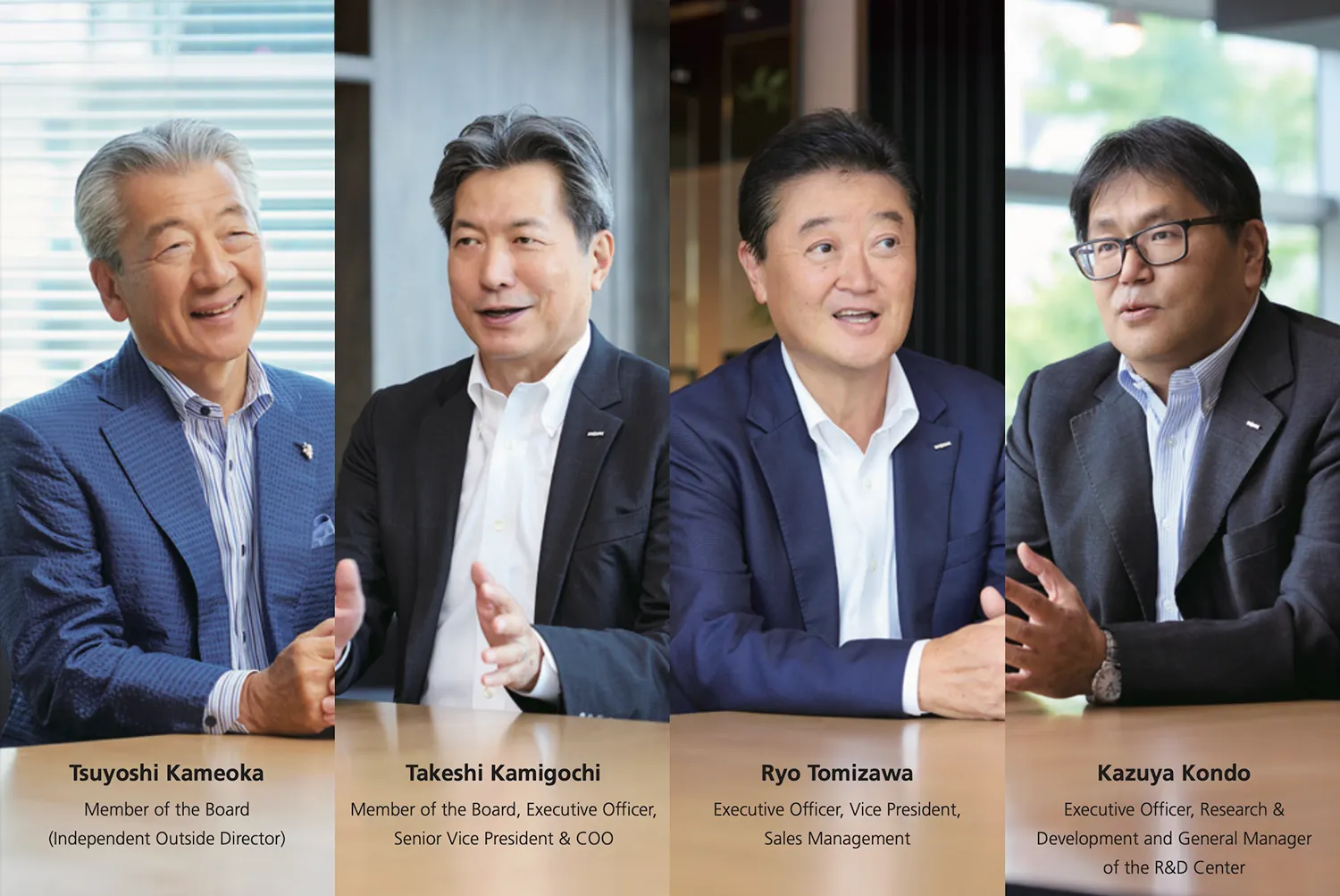
- Strengths and initiatives for Growth -
They exchanged opinions based on their respective areas of responsibility and experiences on the theme of "Strengths of the J-OIL MILLS Group." They also discussed issues and future initiatives to further strengthen the "strengths" that are the driving force behind the company's growth, and outlined the company's overall direction for the future.
Solutions that contribute through "Oishisa design"
The strength of our Group can be summed up in one word: "Oishisa design". In our corporate philosophy, our mission is to "address issues of "eating" and "making" with Oishisa design and contribute to a better society". To achieve this mission, it is essential to have the "solution power" to sincerely listen to customer feedback and solve issues. "Solution power" is the driving force behind our growth, and there are three foundations that make this possible. The first is the contact points, knowledge, and know-how with customers that each of the three companies has cultivated since before Merger. The second is the technical ability to break down Good taste into the elements of "taste, aroma, and texture" and express Good taste that meets the needs. The third is the fact that we handle a wide range of materials with various properties as products, including liquid oils and fats, oils and fats processed products (margarines), powdered oils and fats and fats, and starch.
Speaking from a sales perspective, I believe that the strengths of each company before Merger still hold true today. Honen Corporation was the dominant top brand in the East Japan area in the general market segment of Business use oils and fats Yoshihara Oil Mill, Ltd. was the top brand in the West Japan area, and Ajinomoto Oil Mills was good at major restaurant and ready-made meal and major distribution. In other words, the historical background of the two companies Business use oils and fats, which are the twin leaders in the general market of East and West, and the company Merger, which has strengths in the major restaurant and ready-made meal markets. Business use oils and fats To be recognized in the market of the two companies, it is necessary to maintain a high level of quality, which is evaluated from a strictly professional point of view. The heating stability of the oil, in other words, the performance of long-lasting good condition is required. Our technological capabilities to meet these needs are the reason why we have been able to establish a high presence in the domestic Business use oils and fats market, which is approximately 40%* of the market. Furthermore, in the restaurant and ready-made meal markets, oil must not be viewed merely as a heat medium, but must be used to make the customer's menu ultimately delicious. We are proud of the fact that we have this perspective, and we believe that this is one of the reasons for the support we have received from our customers.
*Our estimate based on sales volume of major companies (FY2023 survey by Nikkan Keizai Tsushinsha)Our strength lies in combining various technologies to create Good taste. This is because we have an advantage in the technology to listen to and recreate customer requests. We have achieved results by proposing solutions that use superior ingredients. However, to maintain our advantage in the long term, we need to constantly create new ingredients. We believe that developing new ingredients will lead to sustainable value creation in order to continue our appealing Solution Business. For this reason, it is important to take on the challenge of scientifically investigating the mechanisms of Good taste.
In the oil industry, where I was involved, we have developed a BtoC business, selling through gas stations, and a BtoB business, selling directly to airlines, transportation companies, and major consumers, but there is a big difference between the two. In BtoC, the points that customers place importance on when choosing a gas station are the distance from their workplace or home and the price, rather than the brand, while in BtoB, not only the price but also the supply stability and quality have a big impact. In particular, for products such as lubricants, whose performance varies depending on the brand, the compatibility with the company's equipment and the quality that can be used for a long time are important. In addition, the human resources that make the person in charge feel that they can trust the person are also important. The same is true in the oil refining industry, where the stability of product supply, quality such as long-lasting performance, and finally the human resources. Based on the foundations of the three former companies, I think that our strength in BtoB is the human resources in BtoB, that is, the ability to make accurate proposals in response to customer requests.
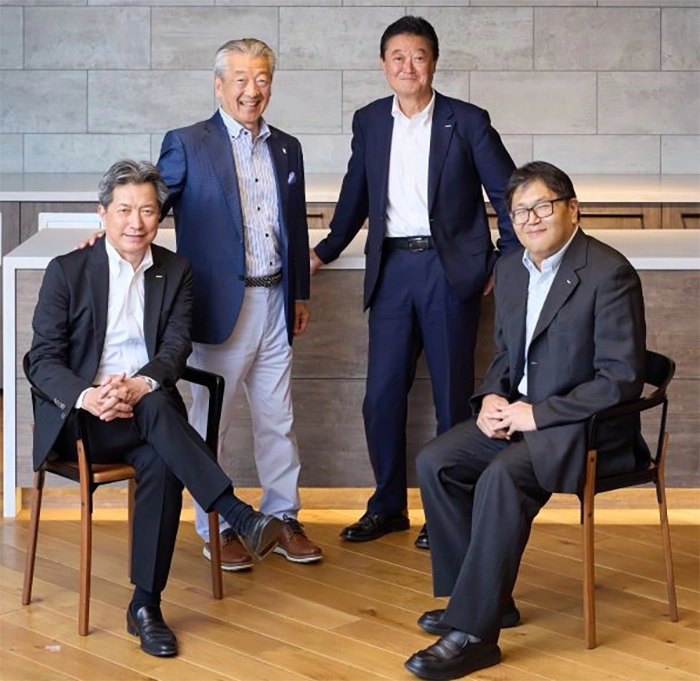
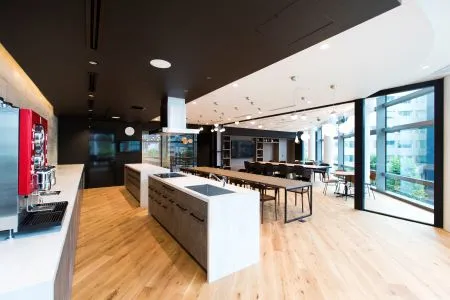
We have established a sales structure to make effective proposals to customers. In Solution Business Division, each sales representative conducts one-stop sales covering all products so that we can propose different materials such as oil, starch, and oils and fats based products to customers. In addition, we have a system in which the same team sells and supports upstream food manufacturers and downstream restaurant and ready-made meal companies. In order to make the cooked food for restaurant and ready-ready-made meal customers delicious, it is essential that we make proposals in collaboration with food manufacturers who manufacture products from raw materials, and Good taste is something that we "create together with our customers." The mechanism for promoting BtoBtoC business contributes to value creation for customers and also leads to the realization of the future we aim for, "Joy for Life -Bringing joy to the future by food."
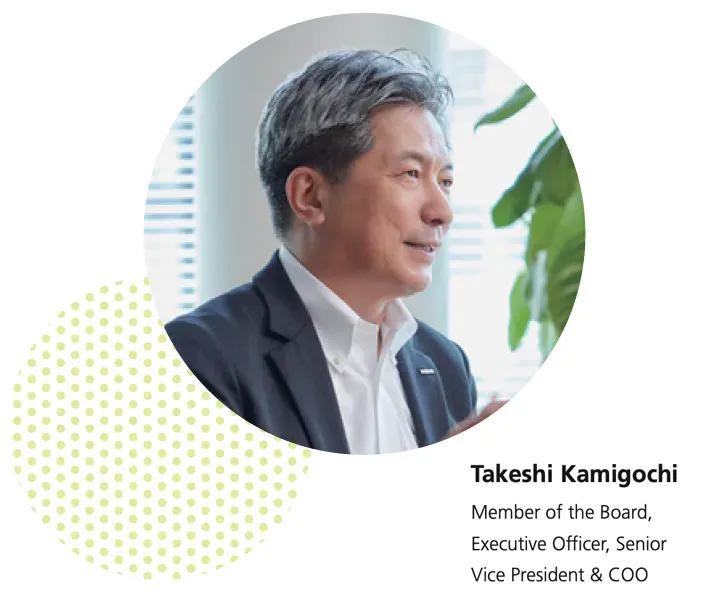
In the BtoBtoC business, the classification of Household use oils and fats and oils and fats Business use is outdated. For example, as opportunities to make fried foods and sandwiches at home are decreasing, the sales ratio of prepared foods is increasing at major supermarkets and the sales floor space is also expanding. We work with food manufacturers and ready-made meal to create the flavors that consumers want, with an awareness of "good taste, health, and low burden". Our facility, "Oishisa design studio", is a complex presentation facility with Household use, restaurant and office functions. We conduct various activities, including tastings, presentations and prototype demonstrations, for all kinds of customers, including those in the household, dining out, ready-made meals, processed foods, confectionery and bread industries. At this facility, customers and our company share various knowledge and insights with each other and discuss how to provide better products. The importance of BtoB is increasing in line with downstream trends such as the increase in inbound demand, but we also believe that mastering BtoBtoC business will be an important point in the future.
Earlier, we talked about upstream and downstream in BtoBtoC, but in the upstream part, there are also approaches from overseas bases. Japanese food manufacturers have many production bases overseas, especially in ASEAN, and processed meat products are processed at local Plant in Thailand and other countries. Therefore, our consolidated subsidiary J-OIL MILLS (THAILAND) Co., Ltd. cooperates with us and shares information on customer needs and technology combinations, and then negotiates with the local Plant of food manufacturers to decide on ingredients, creating a framework for simultaneous follow-up both domestically and overseas. In addition, the needs of restaurant service industry have changed due to the spread of COVID-19. Before the COVID-19 pandemic, restaurant industry served cooked food to customers immediately, but with the increase in demand for takeout and delivery, there are more opportunities to eat cooked food after a certain amount of time has passed. As a result, the function of "suppressing deterioration over time" is attracting attention not only in the ready ready-made meal industry but also in the restaurant industry. This is exactly the function that our company's proprietary technology for controlling the texture of starch products is good at, and it also helps solve the social issues of reducing food waste. Our company not only produces and sells general starch, but also highly functional starch using our own technology, and we make proposals to help customers solve their issues, such as preventing deterioration over time, achieving juiciness, improving flavor, and improving texture. Our company has accumulated experience and know-how from making numerous proposals to the ready-made meal industry, and we are in an environment where this know-how can be utilized in restaurant industry. We feel that our customers in restaurant industry have high expectations of our company.
Our unique strength is being able to offer comprehensive proposals combining starch and oil. Although we are known as an oil company, we have also been manufacturing and selling edible starch since the 1950s, including the time when we were a former operating company. In addition to regular starch, we have a diverse lineup of products, including high-performance starch developed using our unique processing technology that we have cultivated over many years. It can be difficult for customers to come up with the optimal combination of oil and starch, so by proposing comprehensive solutions, we have been able to widely adopt long-lasting oils and starches that inhibit deterioration over time.
One of our competitive advantages in the Business use business is our experience in proposing a wide range of solutions, including not only oils and fats but also functional starches. Our "Oishisa design"is a concept that pursues comprehensive Good taste by controlling the three elements of taste, flavor, and texture.
Whether it's BtoB or BtoBtoC, it's important that members who know each other work together to create Good taste for consumers. The "Oishisa design studio"is a place where our company's staff and our customers' staff can meet face-to-face to create "Good taste," and what is created there belongs not only to our company, but also to our customers. I think this kind of initiatives is one of our strengths.
Under the concept of "Oishisa design", we will continue to develop proposals that satisfy not only taste and texture, but also functions such as suppressing deterioration over time. At the same time, in order to realize the future we aim for, "Joy for Life -Bringing joy to the future by food", it is important for us to continue to provide products and services that balance elements such as "Good taste" and "healthy", as well as "low burden" on the environment and "low burden on labor". On the other hand, securing sales volume is also important to achieve the 6th Medium-Term Business Plan. We have carefully initiatives plans for acquiring new customers and expanding market share in existing channels, and are closely monitoring each customer, region, and channel. As the scale of BtoBtoC is expanding, we have observed many cases where oils and fats and starches have been connected to restaurant and ready-made meal business thanks to starch when we conducted regular observations of them as a set to grasp the progress. We will monitor more precisely in the future. We also want to strengthen our product power in order to expand our business. Innovation is not easy, but it is necessary to pursue it thoroughly. As inflation progresses, there will likely be a demand for even high-value-added products, so we will work with Kondo's research and development team to bring out new products.
We believe that our current lineup alone cannot maintain our competitive advantage forever, so as I mentioned earlier, we will focus on developing new, forward-looking materials, particularly starches, in order to maintain our strengths in the future.
The talent of individuals and teams who create "Oishisa design"
As Mr. Kameoka pointed out, in B2B business, human resources are just as important as product strength.
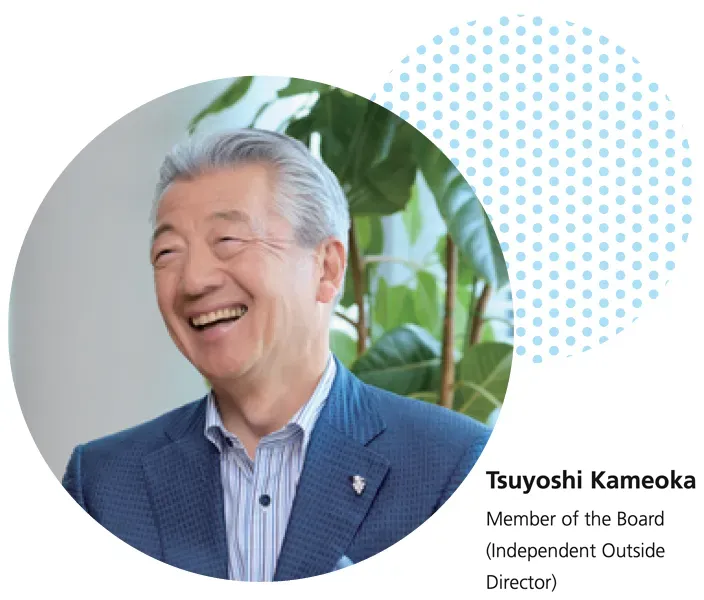
Ultimately, customers need to feel that "it doesn't matter who is in charge." It is important that sales is not the only person in charge, but that technical and management work as a team to cover for anyone who is transferred. Also, as our company celebrates its 20th anniversary, I think it is necessary to create a corporate culture where all employees think about our products and our customers as our next ideal. For example, the other day, we held an in-house event at "Oishisa design studio"for male employees who are taking childcare leave, where fathers could interact with each other through cooking. This will further increase interest and knowledge in our products, such as how our products were after using oils from all manufacturers, or what they thought about the packaging and taste. I hope that through such initiatives, all employees will think about our products and our customers.
I often have the opportunity to attend presentations at the "Oishisa design studio". Generally, sales staff are in charge of making proposals to customers. Previously, this was often the responsibility of managers, but now more and more general staff are making proposals. Regarding product development, the staff give presentations once a month, and I think this has enabled us to respond in line with our company's human resource policy of "maximizing the individual" and "teams that fuse strong individuals". We believe that it is best to take on customers with an all-out effort, and we put this into practice.
As Mr. Kameoka pointed out, to become a "salesperson chosen by customers," we need to be able to make a strong impression on customers, and we are educating our sales department to maximize the "power of individuals." In addition, the power of the human resources stationed at the "Oishisa design studio"is also very important in BtoB business. The employees involved in development are not only engineers, but also former chefs, many of whom joined the company mid-career, so they are able to support customers from a very creative perspective. They are members who can think freely to create new effects by proposing unexpected uses and combinations for the same product and "multiplying our strengths" to create unique value. The key to strengthening the team is how to increase such creative human resources in the future.
From the perspective of research and development, we believe it is important to develop human resources who can scientifically verify the new effects discovered at the "Oishisa design studio". It is important to move on to the next stage by analyzing the factors and scientifically verifying why such effects were obtained.
Defensive and offensive intellectual property that supports "Oishisa design"
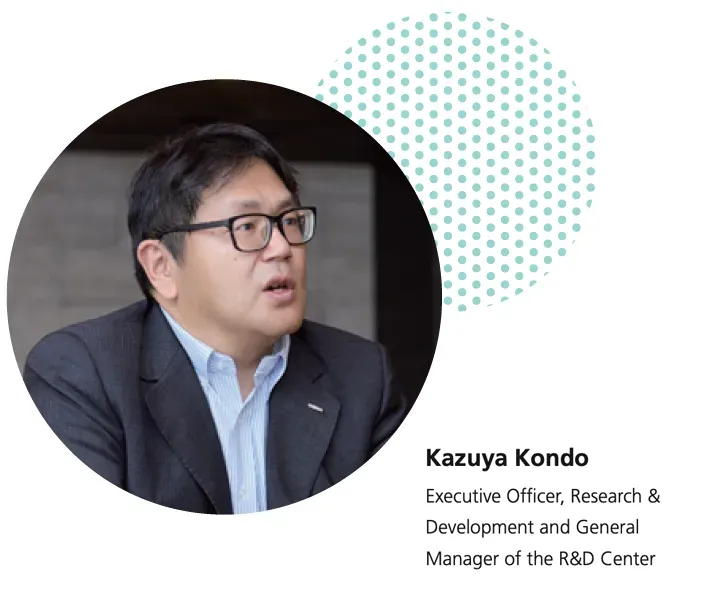
We regard intellectual property as an essential initiatives of our business activities, and have established a specialized department for intellectual property under the Research and Development Division. In general, intellectual property activities involve patenting advantageous technologies to protect them from infringement by other companies, and preventing infringement of other companies' patented technologies. The number of patents held by our company has increased significantly in recent years. In the future, we would like to increase the quality of our patents as well as the number of patents. Since last year, we have been using an external agency to grasp the quality of our patents. By looking at trends over a period of several years, we can understand whether the exclusivity and validity of our patents are increasing or decreasing.
Patents are also important in the product development process. Once product development has progressed to a certain extent, you may be forced to change your policy to avoid infringing on other companies' patents. Therefore, it is important for intellectual property experts, not just the R&D department, to cooperate from the early stages of product development.
I think that's right. For example, if you map the intellectual property of your competitors, you can see which fields they are targeting. When we conduct research and development, we consider what we will develop within our patent portfolio. By working with intellectual property members from the early stages of research and development, we can understand in which fields obtaining patents will lead to our success. Although it is difficult to win in fields where other companies have obtained patents, we can identify gaps at an early stage and see the direction we should take in this field.
The intellectual property team keeps track of patent information that is published every month. It may seem like a behind-the-scenes position, but in the future we expect that their knowledge of intellectual property will play an important role in impacting the direction and measures of our business strategy, and we encourage them to actively attend product development meetings and business meetings. It is clear that intellectual property and business are linked, so we believe that they will play a key role in increasing our company's corporate value.
Promoting dX to refine "Oishisa design"
What is important about dX as we think of it is not to simply use digitalization as a means, but to realize the original goal of transformation in business operations. To clearly express this concept, we are placing emphasis on "X" and advancing our business reform projects as "dX". It is essential to improve business processes in preparation for future personnel shortages, and we also feel the need to advance digitalization at points of contact with customers. Kondo is taking the lead in addressing issues of how to think about both business transformation, which will change the way we work and the type of business, and functional transformation.
Our company has been working on various dX initiatives up until now, but in April 2024, we officially launched the "dX Promotion Project" with CEO Sato as the project owner and myself as the project leader. We have begun initiatives with operational reform and collaboration reform as the first step. As the next step, we will build new businesses through these and connect them to business transformation. Ultimately, we would like to create social value, connect it to social transformation, and achieve our company's vision and mission. At this stage, we would like to first develop business efficiency with an eye toward future dX.
When designing Good taste, the taste and texture are ultimately checked by the human mouth, but I think that introducing AI into the process leading up to that point could lead to unprecedented, groundbreaking ideas. From that perspective, I think the turning point will be whether we can change the way we do things by utilizing AI, rather than simply using dX to improve the efficiency of operations.
From a long-term perspective, I think that is correct. We believe that setting an ideal state or a goal is necessary to determine the direction of initiatives and move forward, so we are holding repeated discussions about this.
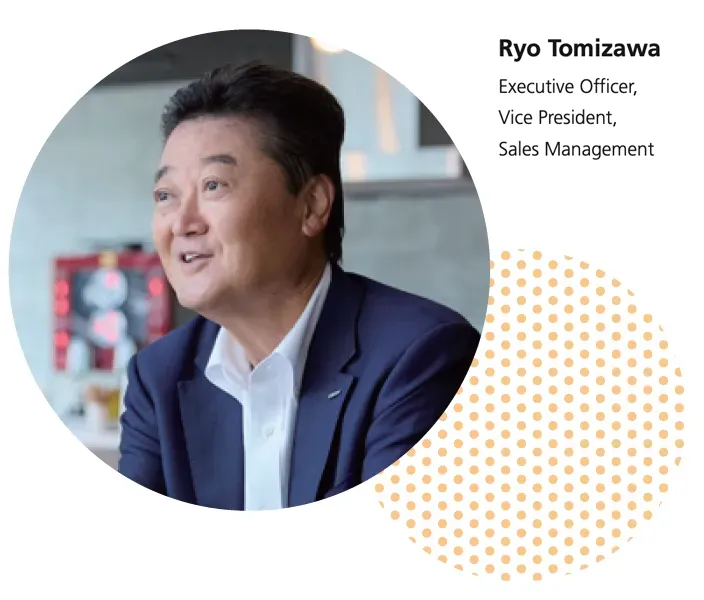
From a sales perspective, I think the key is how to increase touch points with customers. For example, our company operates a website for Business use starch products called "TXdeSIGN Lab.", which provides information to help customers understand and use functional starch. We receive a lot of access from food manufacturers and developers of major restaurant and ready-ready-made meal, but we are not making the most of these issues, so we hope that by promoting dX, we will be able to engage in sales activities that allow us to have even more touch points with customers than ever before.
We will tackle issues of "eating" and "making" with "Oishisa design"and hone our solution capabilities to contribute to a better society. We also aim to become an even more prominent company through the use of intellectual property and the promotion of dX. Please keep an eye on our future initiatives.
